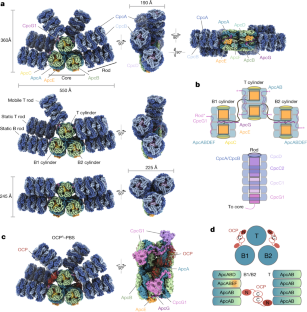ブラウン大学の神経科学者チームは、アルツハイマー病やパーキンソン病の治療ターゲットにつながる発見として、脳の小丘部における変性のメカニズムを報告した。 In a finding that could inform therapeutic targets for Alzheimer’s and Parkinson’s disease, a team of Brown University neuroscientists reports on a mechanism of degeneration for the locus coeruleus region of the brain.
2022-09-01 ブラウン大学
脳幹に位置する青斑核は、神経細胞の主要な供給源であり、脳全体に突起を介して神経伝達物質ノルエピネフリンを供給する重要な部位である。ノルエピネフリンは、多くの疾患治療において共通の薬物標的である。
青斑核は、注意、学習、気分、覚醒、睡眠など、さまざまな認知プロセスに関与している。また、脳のこの部分の神経細胞の死は、アルツハイマー病やパーキンソン病などの認知疾患にも関与している。
研究チームは、GPT2(グルタミン酸ピルビン酸トランスアミナーゼ2)欠損症の研究のために実験用マウスに代謝遺伝子に変異を導入したところ、このミトコンドリア酵素の欠損が、マウスの寿命の比較的早い時期に、選択的に小丘を退化させることを発見した。
GPT2酵素を持たないマウスでは、青斑核の神経細胞が早期に失われるとともに、タンパク質合成の欠損や細胞の成長阻害など、他の変性兆候も観察された。
今回の結果は、代謝の変化が、青斑核における神経変性の最初の原動力となる可能性を示唆している。
<関連情報>
- https://www.brown.edu/news/2022-09-01/locus-coeruleus
- https://www.sciencedirect.com/science/article/pii/S0969996122002236?via%3Dihub
ミトコンドリア酵素GPT2の欠損は、青斑核の早期神経変性を引き起こす Loss of mitochondrial enzyme GPT2 causes early neurodegeneration in locus coeruleus
OzanBaytas,Julie A.Kauer,Eric M.Morrow
Neurobiology of Disease Available online: 28 July 2022
DOI:https://doi.org/10.1016/j.nbd.2022.105831

Highlights
- •GPT2 loss causes early neurodegeneration, gliosis and neuron loss in locus coeruleus.
- •Norepinephrine levels and innervation are reduced in Gpt2-null central nervous system.
- •Electrophysiological properties of Gpt2-null locus coeruleus neurons are altered.
- •Decreases in pS6 precede p62 aggregation and neuron loss in Gpt2-null locus coeruleus.
- •Autophagy indicator, LC3B-II/LC3B-I ratio is increased in Gpt2-null locus coeruleus.
Abstract
Locus coeruleus (LC) is among the first brain areas to degenerate in Alzheimer’s disease and Parkinson’s disease; however, the underlying causes for the vulnerability of LC neurons are not well defined. Here we report a novel mechanism of degeneration of LC neurons caused by loss of the mitochondrial enzyme glutamate pyruvate transaminase 2 (GPT2). GPT2 Deficiency is a newly-recognized childhood neurometabolic disorder. The GPT2 enzyme regulates cell growth through replenishment of tricarboxylic acid (TCA) cycle intermediates and modulation of amino acid metabolism. In Gpt2-null mice, we observe an early loss of tyrosine hydroxylase (TH)-positive neurons in LC and reduced soma size at postnatal day 18. Gpt2-null LC shows selective positive Fluoro-Jade C staining. Neuron loss is accompanied by selective, prominent microgliosis and astrogliosis in LC. We observe reduced noradrenergic projections to and norepinephrine levels in hippocampus and spinal cord. Whole cell recordings in Gpt2-null LC slices show reduced soma size and abnormal action potentials with altered firing kinetics. Strikingly, we observe early decreases in phosphorylated S6 in Gpt2-null LC, preceding prominent p62 aggregation, increased LC3B-II to LC3B-I ratio, and neuronal loss. These data are consistent with a possible mechanism involving deficiency in protein synthesis and cell growth, associated subsequently with abnormal autophagy and neurodegeneration. As compared to the few genetic animal models with LC degeneration, loss of LC neurons in Gpt2-null mice is developmentally the earliest. Early neuron loss in LC in a model of human neurometabolic disease provides important clues regarding the metabolic vulnerability of LC and may lead to new therapeutic targets.


